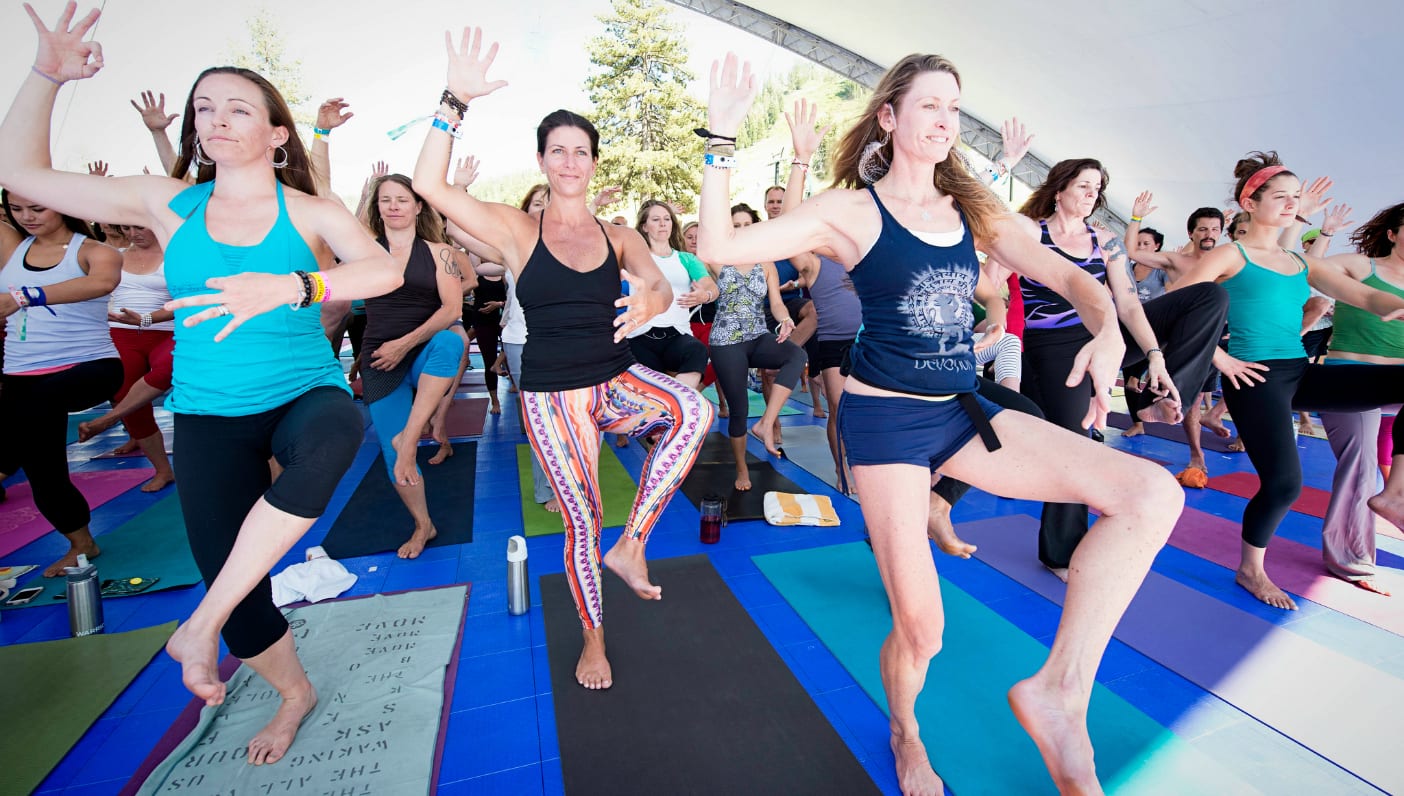
Come get your groove on with us at a Wanderlust Festival or 108 event near you! See the full line-up and buy tickets now! We can’t wait to see you there. In the City of Angels? Check out Donovan’s Deep House Yoga class at Wanderlust Hollywood.
Music is one of those elements in yoga classes that teachers either prefer or detest. Some teachers use music to create and sustain a particular atmosphere, while some purport that music detracts from an internal exploration and is more of a distraction than positive addition to the practice.
In the past few years, however, more studios are enticing students to the mat by fusing music and yoga to offer an accessible and more visceral experience. Music serves as a mediator between timid curiosity and an active decision to sign up and show up. Whereas Sanskrit terms and spiritual jargon may be incomprehensible at first, music is a universal language that speaks to the innate rhythms of daily life. We find it in our heartbeat, in our breath, in the way we walk, the way we speak, and potentially the way we practice yoga.
Schulyer Grant, co-founder and National Yoga Director of Wanderlust Festivals, developed a signature musically-driven class at Wanderlust Hollywood known as The Fixx. In this 45-minute vinyasa class, the music is specifically curated based on its beats per minute (BPM) so that it can serve as a breath guide for students. The music is ambient and subtle throughout, yet functions along with the teacher’s instruction as a backbone of the class. As the intensity builds through the progression of asana, students can tap back into the beat of the music to re-establish a consistent breath pattern.
Besides serving such a specific functional role, teachers are also utilizing the energetic capacity of music to create an experience that otherwise is hard to find. Donovan Vriens-McGrath, another Wanderlust Hollywood teacher, offers a class every Sunday evening that combines vinyasa with electronic dance music (EDM) played by a live DJ, projected light effects, and free-spirited dance. The classes are growing in popularity as students come seeking the combination of an immersive musical experience coupled with intentional movement served with a side of savasana and a dance party for dessert.
Donovan’s Deep House Yoga is a result of his desire to create an environment through various stylings of yoga in combination with music that is, as he notes, “aligned with the higher vibrations of connection, creation, freedom and love.” What attracts so many people to his class is the unique space birthed from the feel-good relationship between EDM music and yoga.
“The music, atmosphere, and teachings guide people to move towards an unrestricted joyous freedom that is continually described to me by participants as ‘so much fun’ and ‘a super high without drugs.’ Students are transported from the self-conscious mind into the impulsive, intuitive, free voice of the body resulting in a beautiful unabashed self expression,” says Donovan.
Traditionally, Moksha, or liberation from that which ties us to suffering and holds us back from experiencing our most authentic selves, is one of of the main goals of walking the yogic path. The experience created by Donovan allows for a moment of self-induced moksha catalyzed by the music, the asana, and the teacher’s guidance. The music in Deep House Yoga is essential to such a liberating release. “I use music in my class to create an atmosphere of inspiration, concentration, and mood elevation,” says Donovan. “The rhythms [of EDM] are a tool to move away from the chatter of the mind and into a more direct experience with movement and breath.”
Whether or not music should be used in a yoga class is up to the teacher’s discretion and overall intention for the experience of her students. Yet the subjectivity of the question to music or not to music does not detract from its power to co-create a powerful class in tandem with an effective teacher. Yoga teachers learn to tools—and are then given the responsibility—to build and hold safe space for practitioners to experience their authentic selves. To take a step closer to individual Moksha whenever they step onto the mat. As in Schuyler and Donovan’s cases, if a teacher is using music to serve that higher intention and benefit of students, than let’s turn the volume up, take a deep synchronized breath, and find a little move-and-groove in our Downward-Facing Dog.
—
 Erin Ward is a freelance writer, yoga teacher, and navigator at Wanderlust Hollywood.
Erin Ward is a freelance writer, yoga teacher, and navigator at Wanderlust Hollywood.